J U R A S S I C A R T
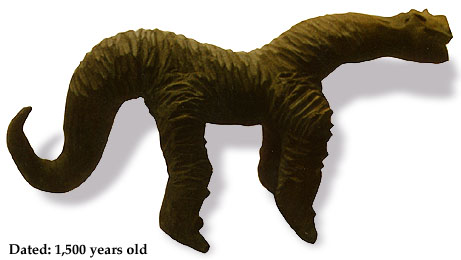 by Dan Eden (continued)
|
|
Disappointed by the lack of scientific interest in his findings, Julesrod thought his discovery would finally see the light of professional scrutiny back in 1954. The Mexican Government sent a highly esteemed team of four archaeologists to examine the clay pieces and the earthen sites of their origin. At a location of their own selection, the team made two excavations and uncovered a collection just like those of Julesrod. They all seemed excited by the find and stated that they must, indeed, be authentic. Three weeks after their return to the University, their official report concluded that they could not be real because of the fantastic representations of both humans and extinct dinosaurs. They disregarded the dating experiments, and the Julesrod's discovery was again suppressed until now.
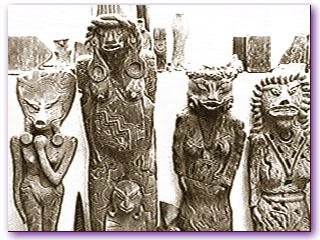 In the 1960's, famous scientists Charles Hapgood and television's Perry Mason director, Earl Stanley Gardner, visited the village to look for evidence. Hapgood noticed that much of the village had expanded with increased population, and that many houses were now constructed over the base of the Bull Mountain area where the clay figures had been initially found. He suggested to Gardner that they might try digging under the foundation of one of these older homes as a way of locating the clay relics and of proving that these artifacts were not artificially buried as some kind of hoax.
Neil Steede, a scientist living in Missouri, calls himself a "contractual archaeologist" and is frequently paid by institutions or museums to examine controversial claims. Since he has no vested interest in the results, his approach is refreshing and usually unbiased. His look at this collection, up close and in detail, is the subject of an extremely well documented video, Jurassic Art, available at BC Productions. In this video, Steede confirms the date of the clay figures, but points out some possible flaws in the dating and analyses. Although he does not confirm or repudiate the authenticity of this find, his discussion of their implications is both shocking and controversial. According to Steede, either our human history goes farther back in time than we ever imagined or the existence of dinosaurs-- a species believed to have been extinct for 60 million years-- survived to more recent times in human memory and mythology. Steede questions whether or not the carbon dating reflects the time when the figurines were made and fired, or whether the test simply indicates when the clay itself was formed by nature. To add suspense to this clay collection, a much older collection of carved stones has been found in Peru which also depicts several extinct species of dinosaurs, flying machines, heart transplants and men looking at stars with what appear to be telescopes. This collection is covered HERE. We'll let you see the stones, hear the scientists and make up your own mind. 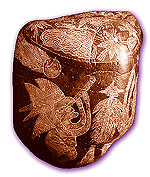 |

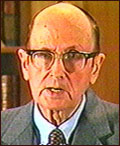 Independent Researcher, John Tierney, has studied these figurines for about 40 years. He's devoted his life to help solve this mystery. According to Tierney (right), "Anyone with any amount of intelligence and curiosity should not rest until this matter can be understood."
Independent Researcher, John Tierney, has studied these figurines for about 40 years. He's devoted his life to help solve this mystery. According to Tierney (right), "Anyone with any amount of intelligence and curiosity should not rest until this matter can be understood." 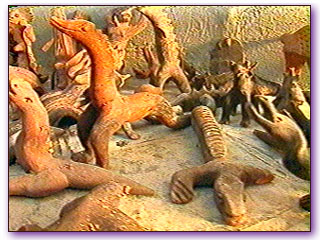 Digging through the hard packed dirt floor in one of these older homes, Hapgood's effort yielded 43 specimens of the controversial type of the Julesrod Collection. To Hapgood and Gardener, this was proof that the artifacts were very real and not a recent hoax. Their collection is now on public display in the Mexican town's museum but no further scientific research has been done.
Digging through the hard packed dirt floor in one of these older homes, Hapgood's effort yielded 43 specimens of the controversial type of the Julesrod Collection. To Hapgood and Gardener, this was proof that the artifacts were very real and not a recent hoax. Their collection is now on public display in the Mexican town's museum but no further scientific research has been done.